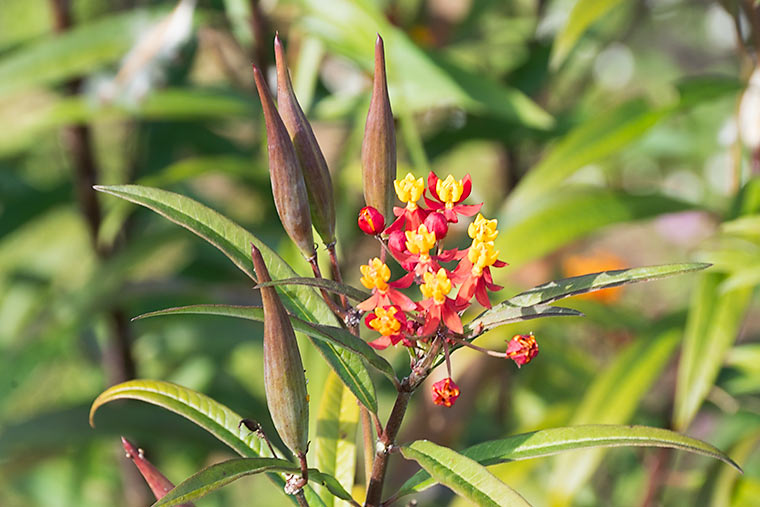Sorry for the post-free period. We just got back from a trip to Costa Rica, and it was not convenient for me to post from there. However, I took enough pictures there to write blogs for a long time!
The photographs below were taken on a trip to the South Carolina coast earlier in December. We were walking around in Beaufort. In front of one of the gift shops, the owners were maintaining a small garden. This handsome milkweed was in fruit (with pods) and in bloom at the same time.
The fact that mature fruits are present along with newly developing flowers suggests that this plant bloomed earlier in the year and developed pods. There must then have been a period with no flowering activity. In the Fall it began flowering again.
This is apparently a cultivated species of milkweed, not a native one. I think it is a cultivar of Tropical Milkweed (Asclepius curassavica).
When the pods mature and split open, they release seeds that are well-equipped for wind transport.
Tropical Milkweed’s ability to bloom later in the season than native milkweeds and to stay green longer has lead to some controversy about the effect of plantings on Monarch Butterflies, which visit Tropical Milkweeds for nectar and to lay their eggs. The larvae feed on milkweed leaves.
Late-blooming Tropical Milkweed may cause Monarchs to delay their migration, thus throwing off their timing. It might even cause Monarchs to forgo migration altogether, stay near stands of Tropical Milkweed, and overwinter in warmer parts of the U.S. This would put them at risk of unfavorable environmental conditions or diseases such as that caused by the protozoan Ophrocystis elektroscirrha, which infects butterflies feeding on milkweed. Some experts recommend cutting Tropical Milkweed to the ground in the Fall to prevent these problems. Read more about this problem here.


